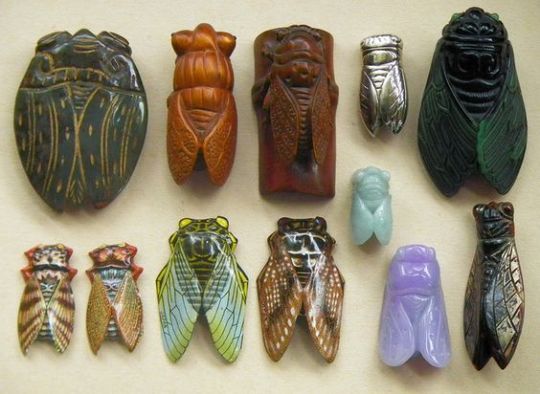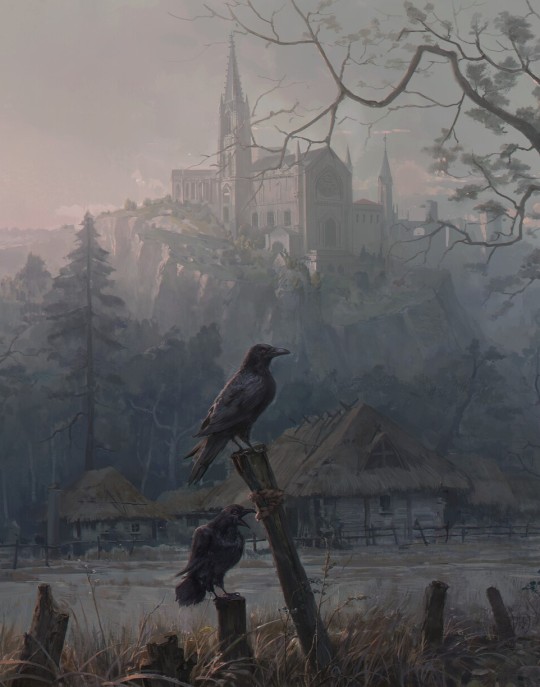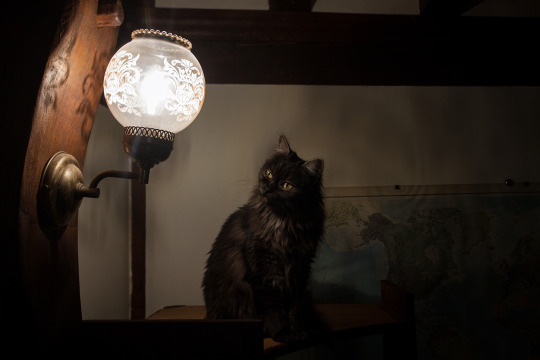Photo

Raven Tree, c.1822 by Caspar David Friedrich (German, 1774–1840)
2K notes
·
View notes
Text
wow tumblr is super broken
is everyone aware that dashboard only shows like half the posts there should be per page? I refresh the page and the number of posts very literally doubles on the page (first and last staying the same almost 100% of the time)
even tumblr's botched search feature brings up other people reporting hidden posts on their dash from more than a week ago, so I know I am not alone
2 notes
·
View notes
Text
love posts that are like. how dare you give money to ao3, a website you use for free and enjoy, when the moral thing to do is give it to me, someone who you do not know, and who is not very nice to you
#if you let them keep talking the fundamental problem is ALWAYS that you are not giving THEM the money#AO3#fandom
3K notes
·
View notes
Text
Don't get me wrong, I don't give two shits about the English Royal Family, but this PR crisis they're in right now is just wild. Every time you think they're done digging themselves deeper, they haul another bucket of shit up from the bottom of the well they're in.
40K notes
·
View notes
Photo





MEAN GIRLS
2004, dir. Mark Waters
15K notes
·
View notes
Text
Hi, Tumblr. It’s Tumblr. We’re working on some things that we want to share with you.
AI companies are acquiring content across the internet for a variety of purposes in all sorts of ways. There are currently very few regulations giving individuals control over how their content is used by AI platforms. Proposed regulations around the world, like the European Union’s AI Act, would give individuals more control over whether and how their content is utilized by this emerging technology. We support this right regardless of geographic location, so we’re releasing a toggle to opt out of sharing content from your public blogs with third parties, including AI platforms that use this content for model training. We’re also working with partners to ensure you have as much control as possible regarding what content is used.
Here are the important details:
We already discourage AI crawlers from gathering content from Tumblr and will continue to do so, save for those with which we partner.
We want to represent all of you on Tumblr and ensure that protections are in place for how your content is used. We are committed to making sure our partners respect those decisions.
To opt out of sharing your public blogs’ content with third parties, visit each of your public blogs’ blog settings via the web interface and toggle on the “Prevent third-party sharing” option.
For instructions on how to opt out using the latest version of the app, please visit this Help Center doc.
Please note: If you’ve already chosen to discourage search crawling of your blog in your settings, we’ve automatically enabled the “Prevent third-party sharing” option.
If you have concerns, please read through the Help Center doc linked above and contact us via Support if you still have questions.
#tumblr#AI#I mean are we surprised#cookies are also supposed to be opt-in cnot opt-out according to EU regulations but they much are the latter in practice
94K notes
·
View notes
Text
Frontline Medic Lessons
Good to know things you probably won't learn in books but only the hard way. Note: This is specifically referring to literal 'battlefield medicine', where supplies are scarce, or not existent anymore if you've got too many casualties at once, and circumstances are deadly and fucked up. You would not (even need) do most of these things in any normal medical environment! Also, this is not medical, or any, advice in any legal sense, but just me sharing my experiences. Also, to fully understand this post you need some medical background knowledge, because I won't explain the basics. Actually I'm writing this more for myself than you.
Must have: What I call 'medical duct tape'. It's large and sturdy similar to actual duct tape, but of a material that's not fully waterproof (why that matters, see below). I didn't actually know I need it until a friend gave me some, and I found out I'm glad he did.
First, use it to secure bandages, because they will likely come off or move if you've got a difficult evac route/procedure. Try dragging someone with bandages through the mud. Or have a casualty walk for 3 kilometers through the woods with a bandaged leg. The thing won't last or stay in place for long. So tape it up. But don't cover the whole bandage in waterproof tape, because waterproof from the outside equals bloodproof from the inside, so you wouldn't notice it if a wound restarts bleeding at some later point. That can happen when evac is bumpy or from random movements that blood vessels rupture (more) or coagulated blood that sealed the wound gets ripped too much in some direction or bone fragments move around and damage something, or whatever. You have to recheck wounds regularly even if the bleeding stopped, because it doesn't always stay that way, and you can't do that with a waterproof bandage eg. with real duct tape covering it. So, you need tape that allows you to see it if blood would soak through the bandage.
Second, you can splint everything with tape and random stuff you find (magazines, sticks, large caliber bullet shells even if it's a 'short' fracture, etc), or with tape alone in some cases. If you don't have proper splints and ace wrap that is, if you do, use that of course, but if you don't you can splint with anything solid you can find + tape. Fractures in the upper extremities you can even secure quite well without a splint, by 'splinting' them against the torso, in different ways depending where the fracture is located and what type or how bad it is. Like, in normal people's language, you basically tape a broken arm to someone's body, in a certain position and spot depending on the injury, to stabilize the fracture.
Third, you can cut it in stripes and use it as wound closure for smaller wounds, you know like steristrips. If you have time and peace (probably not but just saying) you can even cut it in butterfly shape (like butterfly wound closure strips) and almost do a hospital worthy wound closure. One consideration though: You should desinfect the wound real well before (and during and after) closing it like this, and the desinfect liquid, no matter what you use, will prevent the tape from sticking to the skin well. So you need looong stripes, and you should only apply half of them at first (with a gap in between every two ones for one more later), then secure those with a long strip of tape alongside the wound on each side, then apply the other half and secure those the same way. That's the best method I found so far to close cuts with medical tape and in the field. - Note: Wound closure like this is actually not necessary pre-evac, and shouldn't even be done because you can never desinfect a wound in the field as well as in a proper medical facility, and you don't want to close a wound that's not sterile. I'm only mentioning this for the sake of completion of my tape-uses-list. This is a use of it. But it's only very rare circumstances that you would actually do it as a field medic!
Lastly, you might need tape to secure a causality to a stretcher, or a carry sheet around a casualty if you don't have enough people to carry it properly. You can actually transport someone on (in) a carry sheet that way (by using tape, or parachord) completely alone pretty well and over long distances, almost like on a slide. You just need to be strong enough to drag the weight (if you can't do that with everybody in your unit, don't be a field medic).
Okay, end of the tape section. Re splinting... Let's talk about setting bones. If there's any way to reasonably avoid it just don't do it, but let the paramedics/doctors at the place wherever you evacuate to handle it. If you have a fracture that's so fucked up that the idea of setting it straight even comes up, you have a lot of soft tissue damage around it too, and possibly bone fragments in the wound. With every manipulation of this wound you risk damaging, possibly even severing, (more) blood vessels or nerves, or damaging whatever, so you want to leave it alone as far as possible. Whatever you have to do to stop a critical bleeding has to happen no matter what, but anything else can wait. And if that means more suffering for your casualty so be it, he'll thank you later.
It's a judgement call of course. Not saying never ever set bones, as there are circumstances where that makes sense to do it early. And sometimes, rarely, you really have to. Just keep in mind that it comes with a risk and think about it if it's necessary /worth it (in most cases it's not).
Internal bleeding/damage: There's literally nothing you can do about it in the field except administering TXA and hope for the best. Only a surgeon can fix that one.
Re TXA: You can totally give it i.m. if you have to (again, not actual medical advice here, but just my experiences and opinions). As far as I know that's not recommended in any 'official' /legit guidelines (it's not not recommended either though, just not mentioned at all, but that normally counts as something you don't do). Normally you give it i.v. with an infusion, with fluids over time, but if that's just not an option and you feel like you need it anyway, intramuscular is worth a shot. There are some case studies about it by now that show no problems with it and suggest it's better than no TXA at all. There's more research needed about this topic, so we don't know that for sure yet. I've done it repeatedly (and many other frontline medics in Ukraine that I know), never had issues coming from it, believe it helped (can't know for sure though), so my personal opinion is, in case of critical bleeding if i.v. isn't possible, do it.
Apropos i.v. access: The green catheters.
Apropos fluids: Not an option in the field, but at a stabilization point /field hospital or something, improv hack... If you don't have a fluid warmer, you can get fluids to body temperature in a microwave, 600W, 120sec. If there's any way at all to avoid it, don't give cold fluids, especially in winter.
Apropos winter: A person lying on the ground in winter will lose the majority of its body heat to the ground, not to the air (in any case, regardless of clothing situation)! If you have the proper means, of course insulate them everywhere from anything, but if you have to choose (eg. a sleeping mat or small blanket is all you have or the like), insulation between casualty and ground is priority over covering the body with something! Hypothermia is a serious issue with causality with blood loss (not just in winter btw but at possibly any temperature, even in summer when it's hot, but of course it's worse the colder the environment). This also (to a lesser degree but still) applies to casualties just sitting on the ground. Don't have casualties, not only but especially in cases of severe blood loss, lie or sit on cold ground.
Apropos blood loss: You can usually recognize blood loss stages in the pulse pattern. Typically blood loss comes with an increasing pulse rate (body tries to compensate by making the heart beat faster), up to dangerous degrees of tachycardia (100+ beats per minute, can get much higher than that). Hypovolemic shock typically comes with a low pulse rate. This connection isn't fully reliable! There can be factors (injuries, psychological factors, pre existing conditions) at play here that change those patterns, or what it looks like on a pulse oximeter which is the best thing to check pulse rate you'll have in the field, so it's not entirely safe. But it's reliable enough that you must know about it. I literally had a casualty almost bleed out on me in the dark, couldn't see shit, after I had fixed the wound (it started bleeding again later during a very bumpy evac ride that must have broke something new, as I said that can happen), and I only noticed that my so far stable casualty started bleeding again from the changing pulse rate (we had to stop the car in the middle of the road and I had to start the whole hemorrhage control process all over again).
Apropos hemorrhage control... little detail that many so called medics don't think about (they should but often don't) : Be very careful removing pieces of textile (clothes) or gauze/bandage (that a buddy put there as first aid before you're there) from wounds. When you cut someone's clothes off or take shitty first aid bandages off in order to take care of a wound properly, only remove any kind of textile from the wound if there isn't already significant blood coagulation going on. Textile pieces together with coagulated blood can seal wounds really well, and if you remove them you're basically reopening all the blood vessels that are in the process of self-damage-control. Wound cleaning is such a natural thing to do for medics and it feels kind of wrong to just leave stuff in there, possibly push it even deeper by wound packing or applying pressure or whatever you have to do, but your priority isn't pretty but alive. Let the surgeons later pull the textile out of the wounds, if they help right now leave them alone. Cut clothes or bandages off someone around the wound and don't pull any textile out of wounds if they serve to seal them up. - Obviously this consideration isn't relevant for very fresh wounds.
Apropos stop the bleed: That's literally the one and only thing you do during care under fire, and only as far as is necessary to get to cover without losing someone on the way. No point in providing any kind of medical care if you're just getting yourself and/or your casualty killed in the process. It's totally obvious, but seriously, from experience, depending on the situation the temptation, for medics, to do more than is absolutely necessary can sometimes be pretty big even under very dangerous circumstances. Don't. Only the bare minimum and then get yourself and your casualty the fuck somewhere safer and continue there.
Just off the top of my head... I can right now think of a literal hundred more things, but the post is already long and I'm tired of typing. Fuck, I have to write all of this shit down before I die and all the things I learned over the last 1.5 years, under great suffering, die with me... To be continued!
#she did not continue because this tumblr user died on the front lines on jan 31#Ukraine#2024#medicine
48 notes
·
View notes
Text
Will never forget how long the 2-metre walk from my bed to the window in the morning of 24.02.2022 felt as I was desperately trying to persuade myself that the booming, earth-shaking sound was just an unusually vicious thunder, and simultaneously thinking 'what if I pull the curtains open and there is no rain?' I pulled the curtains open, and there was no rain. No thunder clouds. Just the faces of neighbours also woken up by the missile explosions looking out of the window. That's when I understood that the war began.
Here's a reminder that Ukraine still needs donations badly to fight off the invasion.
United 24 and Come Back Alive are both verified charities that support the Ukrainian military. They offer various options, for example, collecting money for medical equipment, humanitarian demining and rebuilding Ukraine if someone doesn't feel comfortable donating towards weapons.
1K notes
·
View notes
Photo

Tom Perkinson (American,b.1940)
Full Moon with Venus and Mars, 2023
Watercolor and pastel
1K notes
·
View notes
Text
Sorry my posts haven't been as frequent or funny as usual. It's because I'm eating well, sleeping regularly, and exercising
#actually I have had the flu for over 4 weeks now#but quitting tumblr has done wonders for my mental clarity and ability to string together a sentence#about me#social media
63K notes
·
View notes
Photo

Gunter H. Korus (1925 - 2021) - Sunlit. Oil on linen.
18K notes
·
View notes
Text
reblog to pet the sad cat
__
/> フ
| _ _ l
/` ミ_xノ
/ |
/ ヽ ノ
│ | | |
/ ̄| | | |
| ( ̄ヽ__ヽ_)__)
\二つ
272K notes
·
View notes
Photo

various cicada-shaped knickknacks
[succulentlover77 / flickr]
41K notes
·
View notes




